
Month: December 2016
(A James Dean slideshow over) Thomas Stewart, “Wotan’s Farewell” from Die Walküre, Act 3 (von Karajan, 1967)
Richard Wagner is certainly a problematic character, historically, musically, and ethically. The short answer is that bad (or at least morally compromised) people can make great art. Wagner’s stated aim was to destroy the established order and to transform established social relationships. (That’s why Wagner’s personal behavior often involved sexual betrayals.) Wagner himself wrote:
I will destroy each phantom that has rule o’er men. I will destroy the dominion of one over many,
of the dead o’er the living, of matter over spirit; I will break the power of the mighty, of law, of property.— (Richard Wagner: “The Revolution.” Printed in Volksblätter No. 14, Dresden, Sunday April 8, 1849.)
Ironically enough, Wagner’s stunning success as a composer of music dramas was quite dependent upon the generosity of the newly rich (who craved the social prestige that came from being associated with a celebrated composer), and later, the patronage of the nobility. So much for overthrowing the established order—at least in the real world. Continue Reading →
Morten Lauridsen, “O Magnum Mysterium” (Kings College Choir)
Not all the great music has already been written. Nor is it the case that in order to be great, music must have been written more than 100 years ago. A prime example is Morten Lauridsen’s Nativity motet “O Magnum Mysterium.” Yes, the overall style pays tribute to historical forms; but, there is a ray of modern light, as the composer explains here.
Lauridsen’s “O Magnum Mysterium” is one of the most oft-performed classical compositions of the 20th century. The reasons why should become obvious upon listening.
Wishing all a Merry Christmas.
# # #
Wise Men From the East, Bearing Gifts! (Part 2)
 Part 1 covered recorded media (CD boxed sets, and an SACD/CD hybrid). Part 2, concerning recommendable hardware gifts, will be short and sweet… three buy-them-once-and-buy-them-right pieces of audio gear.
Part 1 covered recorded media (CD boxed sets, and an SACD/CD hybrid). Part 2, concerning recommendable hardware gifts, will be short and sweet… three buy-them-once-and-buy-them-right pieces of audio gear.
To learn their identities, though, you will have to click through to the jump page.
Merry Christmas!
Wilson, MSB, & Esperanto Audio @ Fidelis Music Systems, New Hampshire
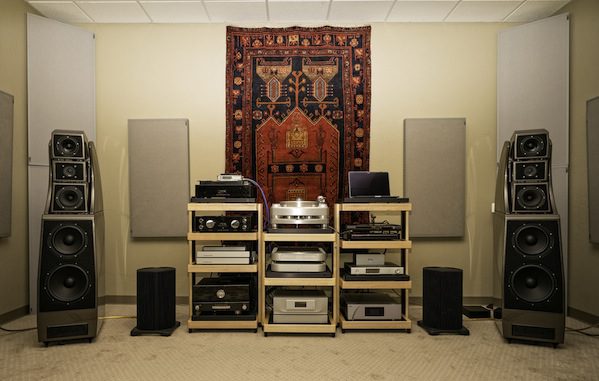 Photo by Peter McGrath, MFA
Photo by Peter McGrath, MFA
My colleague Mike Zisserson has already written up this event for Positive Feedback Online. Therefore, my coverage will be a bit broad-brush.
This open house took place Saturday afternoon December 3, at Fidelis Music Systems‘ Nashua NH store. While the featured brands were Wilson Audio Specialties and MSB Technology, I was tickled that Wilson Audio’s Peter McGrath had brought along two of my Esperanto Audio digital cables, one for the S/PDIF signal, and the other for the Word Clock connection. More, and more photos, after the jump.
Wise Men From the East, Bearing Gifts! (Part 1)
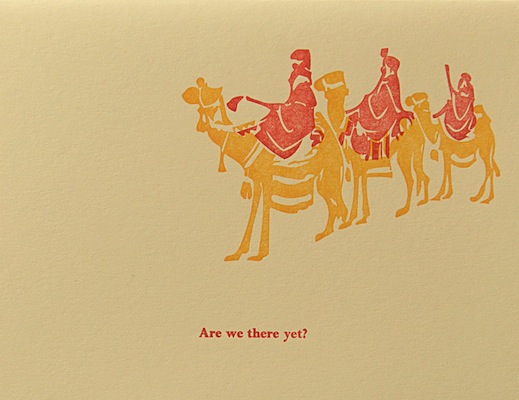 Letterpress art print © and courtesy of Zeichen Press.
Letterpress art print © and courtesy of Zeichen Press.
The Gospel narrative doesn’t say that the number of wise men (or astrologers) from the East was three; that’s just an inference based upon the report that the Magis (however many of them there were) brought three gifts of gold, Frankincense, and myrrh.
Be that as it may, what has come down is a piously embellished story of three wise men, complete with names and capsule biographies.
So, to start my suggestions for Christmas (or other seasonal) gift-giving, here are three gifts: two boxed sets and one single recording, all of especial musical and sonic merit.
Details and sound samples after the jump! Continue Reading →
Gilad Hekselman: J.S. Bach, Invention No. 4
Hmm, I seem to be in a bit of a Bach groove, with my last couple of Music-Video Friday posts (here, and here).
From far out in left field, or at least, from NYC, here’s Israeli jazz-guitar virtuoso Gilad Hekselman, playing what appears to be a free transcription of J.S. Bach’s Two-Part Invention No. 4, BWV 775, in the violinistic key of D-minor. I say free transcription, because I think that, having to play both parts with only open strings or the frets reachable from one position at a time, he did not have available two extra fingers to play the long trill you might remember from the legendary Glenn Gould piano recording. I particularly like his non-frenetic tempo, and restrained dynamics. Gilad Hekselman‘s website is here.
# # #
Christmas Music (Part 3): Arturo Delmoni & Friends “A String Quartet Christmas”
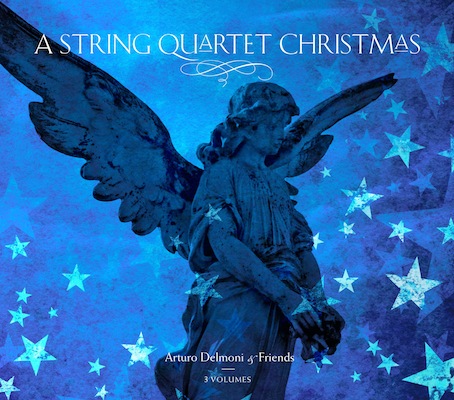 A String Quartet Christmas
A String Quartet Christmas
Arturo Delmoni & Friends
Steinway & Sons Recordings 3-CD set 50001
(All volumes produced by John Marks and mastered by Bob Ludwig. Volume One recorded 1995 by David Hancock at the Church of the Holy Trinity, NYC; Volumes Two and Three recorded by Jerry Bruck at the Recital Hall of the SUNY Purchase Conservatory of Music in 1997 and Riverside Church NYC in 1998, respectively.)
I produced the three volumes that make up this set for my own micro-boutique/audiophile label John Marks Records, commonly known as JMR. The idea was to present traditional and sacred Christmas music in straightforward, un-gimmicky arrangements, recorded in orthodox stereo (so to speak) in an acoustically-appropriate space. In the case of Volume One, that was New York City’s Holy Trinity Church, a photo of which can be found after the jump, along with sound samples. Continue Reading →
Christmas Music (Part 2): “Christmas Night,” The Cambridge Singers
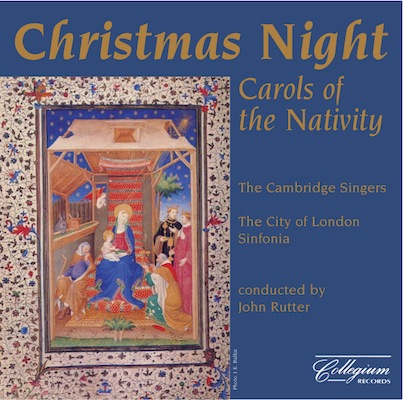
Christmas Night – Carols Of The Nativity
The Cambridge Singers and the City of London Sinfonia,
conducted by John Rutter.
Collegium CD 106 or download
(Recorded January 1987 by the BBC Transcription Unit in the Great Hall of University College School, London. Jillian White, producer; Campbell Hughes, engineer.)
A few years back, my friends at Steinway & Sons asked me to write about a favorite Christmas album for their music and culture magazine Listen.
Here’s what I wrote then, and I still feel the same way:
I received this recording as a Christmas present from violinist Arturo Delmoni. It quickly became an all-time family favorite, not only for its world-class singing and vocal ensemble (a young Mark Padmore is in the tenor section) but most of all for its consistently tranquil and gently enveloping sound-world—just like a lullaby, except more varied and musically interesting. (Arturo Delmoni, of course, knows something about Christmas music, in that he led the string quartet in the three Rejoice! A String-Quartet Christmas projects.)
More comments, and sound samples, after the jump. Continue Reading →
Christmas Music (Part 1): Nat King Cole, “Christmas Favorites”
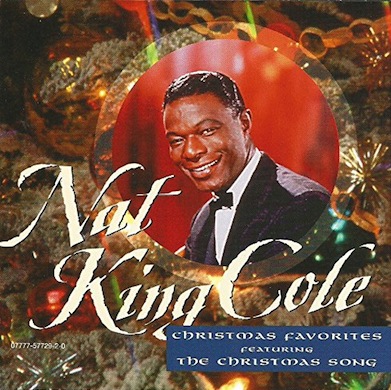
Velvet-voiced pop and jazz tenor Mel Tormé (1925-1999) and songwriter Bob Wells wrote “The Christmas Song” in less than an hour, one sweltering day during the summer of 1945. Tormé wrote the music, and collaborated on the lyrics. (That Tormé’s parents were Jewish immigrants from Russia did not stop Tormé from writing what is generally regarded as the most popular and beloved English-language Christmas song of the pop-music era.) Tormé had been a child-prodigy singer and drummer; he was also a composer and arranger.
Though revered as an interpreter of Great American Songbook songs, Tormé’s musical worldview included deep respect for classical composers Frederick Delius and Percy Grainger (talk about strange musical bedfellows). Rock and roll, he liked not so much. Tormé’s essential musical conservatism endeared him to Playboy magazine founder Hugh Hefner. (And if anyone out there needs a Media Studies, American Studies, or Musicology research topic, I nominate Hugh Hefner’s role in keeping jazz on life support in the US during the ascendancy of rock music.)
Nat King Cole sound samples (some not so obvious) and more pensiveness, after the jump. Continue Reading →
David Leisner: J.S. Bach, Chaconne from solo-violin Partita No. 2 in d
My most recent Music-Video Friday feature was Hélène Grimaud’s live performance of Busoni’s Chaconne for Piano in D minor (after J.S. Bach). I expect no argument when I say that that piece was as much about Busoni as it was about Bach; and further, that Ms. Grimaud’s scintillating performance was more at home in the musical world of the Europe of 1890, than of 1720.
I last covered a David Leisner recording here (a program with cellist Zuill Bailey). David Leisner is a magnificent guitarist, as well as a composer of great feeling and integrity.
#Humblebrag: I played a large role in the production of the première recording (for a label other than JMR) of Leisner’s Sonata for Violin and Guitar, including suggesting a transcription of a Handel sonata for violin and keyboard as the opening piece, and writing the liner notes. I was tickled for us all when Stereophile magazine (this predated my employment there) designated that recording as a Recording of the Month. Continue Reading →


